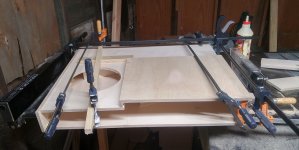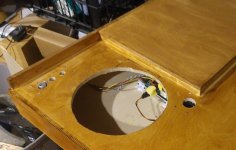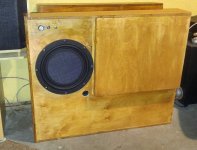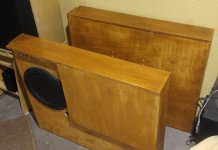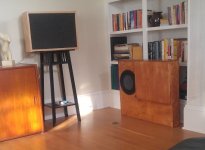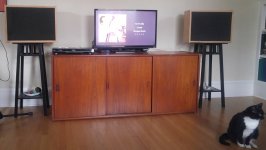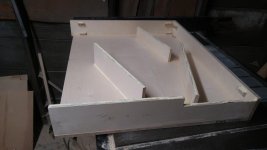Here's my just-installed subs that I've been working on gradually since the end of summer. Designed to be hidden within a very small living room. I've been using a Linkwitz Transform on the sealed 'SmallSyns' to push their 90Hz-ish low end down to 50Hz, which worked better than I would have thought it would. But I wanted to get lower than that and to give the 6inch woofer pairs in the speakers an easier time when playing louder. We don't like having the screen or speakers dominate the appearance of the room, so keep that part of it small.
So these stealth subs use the 10" low-profile Dayton LS10-44 subwoofers in shallow-as-possible sealed 1.1 cubic foot cabinets. They are made to sit behind a midcentury modern teak credenza we have in the room serving as a TV stand and with all the amps and stuff hiding behind the little 32" flat screen. The drivers face the wall with sound exiting through gaps at the sides. I stained the cabinets to be close in color to the credenza.
The subs have ICEpower 250ASP power amps mounted inside them (which should provide about 300W into the 2ohm load of the driver) with an opamp circuit added to do the low-pass rolloff and to apply a Linkwitz transform to get the cabinets to play down into the 20 Hz range. I was afraid that might have been asking for too much, but as it turns out, with the room gain and the wall/corner placement I had to EQ the response down below 40Hz to tame it down! No problem getting more bass than I need from this setup.
The overall sound is quite a bit better than it was, so of course today after tuning everything up I'm just sitting around listening to music while I type this up.
Some Pics:
construction --

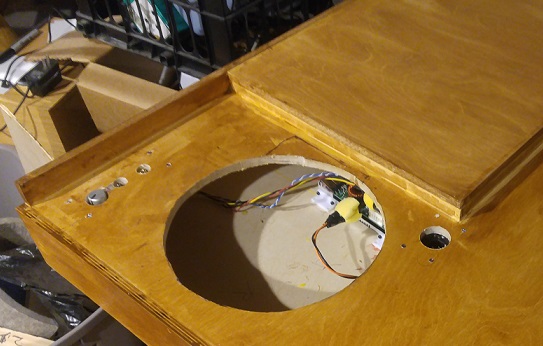
Testing and pre-installation --
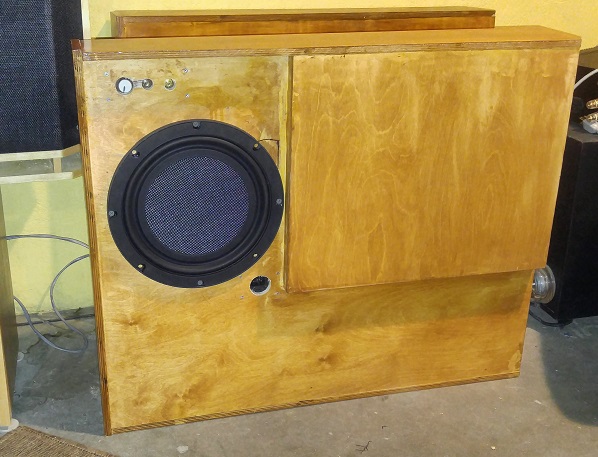
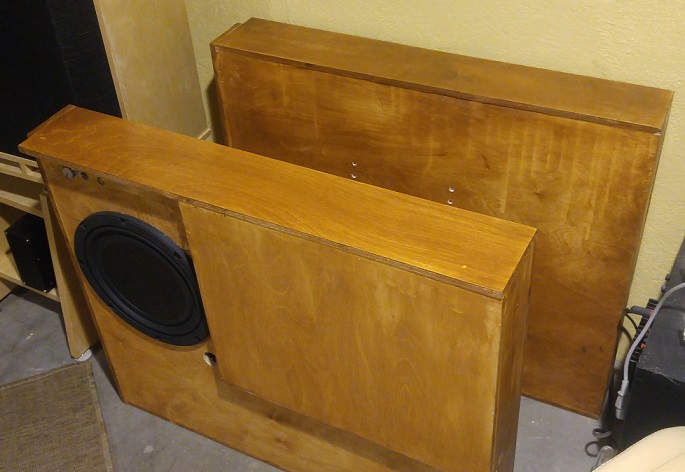
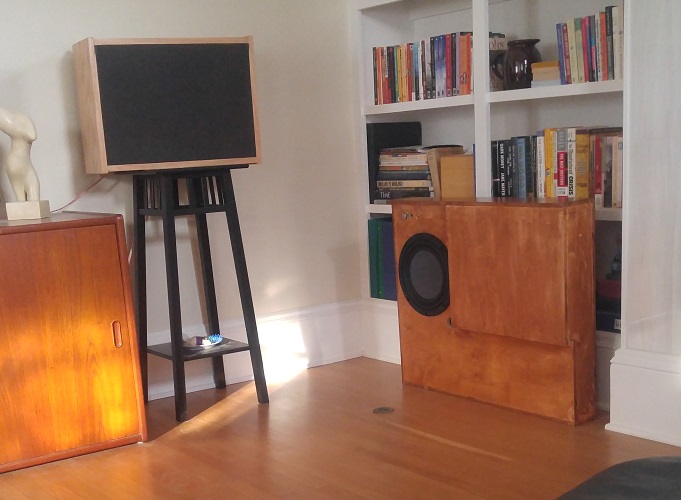
Installed behind the credenza (some wire management yet to be done...) --
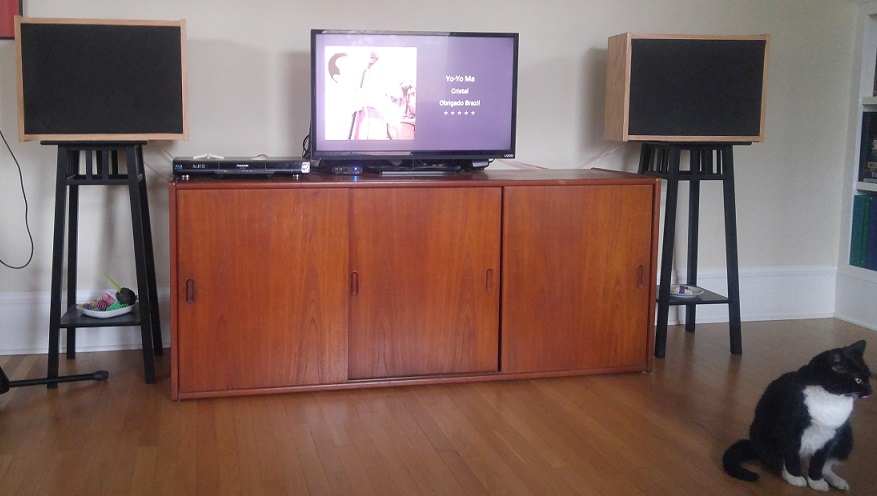
So these stealth subs use the 10" low-profile Dayton LS10-44 subwoofers in shallow-as-possible sealed 1.1 cubic foot cabinets. They are made to sit behind a midcentury modern teak credenza we have in the room serving as a TV stand and with all the amps and stuff hiding behind the little 32" flat screen. The drivers face the wall with sound exiting through gaps at the sides. I stained the cabinets to be close in color to the credenza.
The subs have ICEpower 250ASP power amps mounted inside them (which should provide about 300W into the 2ohm load of the driver) with an opamp circuit added to do the low-pass rolloff and to apply a Linkwitz transform to get the cabinets to play down into the 20 Hz range. I was afraid that might have been asking for too much, but as it turns out, with the room gain and the wall/corner placement I had to EQ the response down below 40Hz to tame it down! No problem getting more bass than I need from this setup.
The overall sound is quite a bit better than it was, so of course today after tuning everything up I'm just sitting around listening to music while I type this up.
Some Pics:
construction --
Testing and pre-installation --
Installed behind the credenza (some wire management yet to be done...) --
Attachments
thanks for showing this. nice work, stealthy indeed! I'm an idiot when it comes to most everything, possible to scribble an inexact "diagram" of internal bracing or brief description? I'd like to rip this off with a pair of clones for myself, or adapt it into more of a riff-off...
No I don't think I could. Open baffle doesn't work against a wall in the lower frequencies, upper frequencies wouldn't be open baffle with a wall less than a foot behind. Either the speakers are against the wall or the listening position is against the wall in this room and arrangement.
I've also not really been enthused with the sound of most open baffles I've heard (stats, planars, ribbons).
I've also not really been enthused with the sound of most open baffles I've heard (stats, planars, ribbons).
Last edited:
thanks for showing this. nice work, stealthy indeed! I'm an idiot when it comes to most everything, possible to scribble an inexact "diagram" of internal bracing or brief description? I'd like to rip this off with a pair of clones for myself, or adapt it into more of a riff-off...
For internal bracing, I just used three boards glued from broadside-to-other-broadside, and arranged so that most spots on the broadsides seemed as close as possible to the braces or walls, nothing scientific. I just measured the expected lengths with a ruler to figure out how to cut (and with height matching the distance between broadsides in the area), then add glue and clamp.
Attachments
- Status
- This old topic is closed. If you want to reopen this topic, contact a moderator using the "Report Post" button.
- Home
- Loudspeakers
- Subwoofers
- Stealth Subs for the sealed SmallSyns
